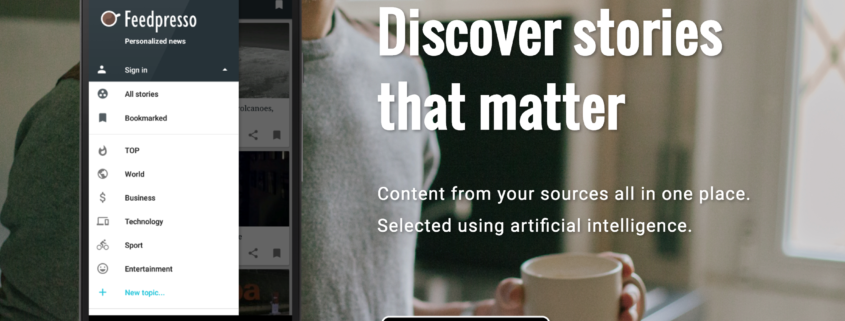Meet Feedpresso: A New Way to Get the News
The problem isn’t a new one. And yet it may be even more important today than it has ever been. Since the web started changing the way newspapers, magazines, and even academic journals spread their content, and make money, a constant and seemingly intractable problem has remained firmly resistant to any solution.
How do you deliver, consistently, a broad range of content to a single reader that challenges them, engages them, informs them, and helps them keep an open mind? While institutional media returns to subscription payment models as a bulwark against the dominance of ad-based media and social media sharing (as well as ad-blockers), and paywalls return to the internet in larger numbers, consumers suffer from a lack of quality, trustworthy, and diverse content.
Feedpresso, which is in StartupYard’s current accelerator round, is the startup tackling that problem. Unlike a typical newsreader or aggregator, they aren’t interested in what your friends like, or what advertisers would prefer you see. Instead, they approach news curation on an individual basis, using machine learning to understand each individual’s information needs, and help them to discover and build a strong stream of high quality content.
They do it all through a cross-platform application that analyzes a person’s reading history, and works constantly to bring that person content that is highly relevant and useful to them personally. I caught up with the founders of FeedPresso this week to talk about their project, and how they’re doing at StartupYard so far.
Cool! Check out the Interview with @Feedpresso, changing the way you find and read the news. #startup #innovate Share on XHi Ernest and Tadas, tell us a bit about how you started working together, and why you founded Feedpresso.
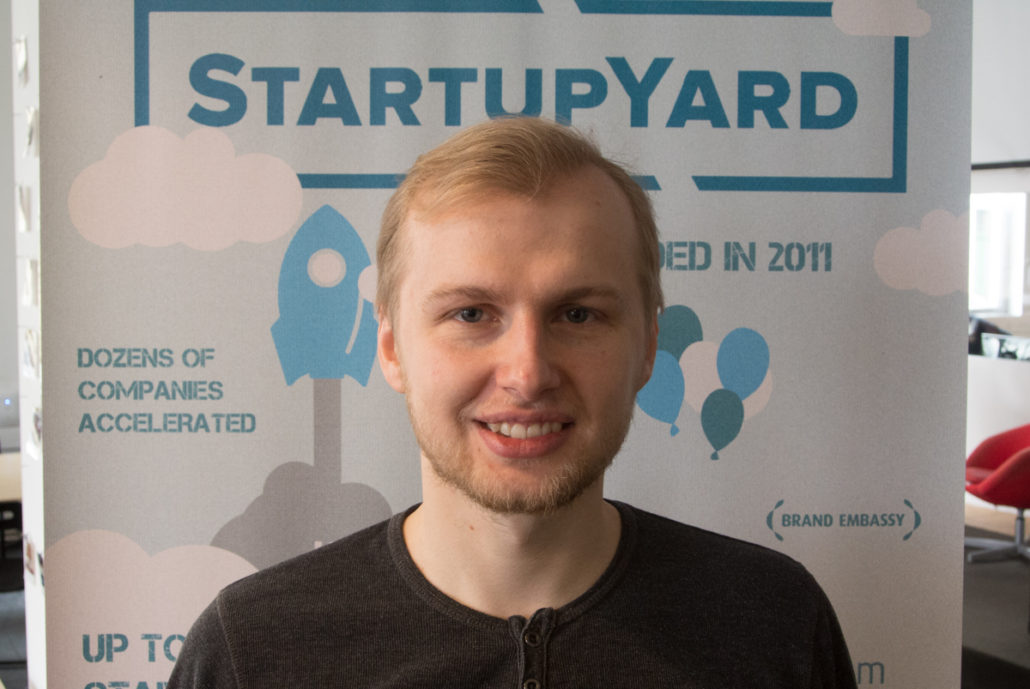
Feedpresso CoFounder and CEO Tadas Subonis
Tadas: We met 4 years ago when we started our studies at the University of Edinburgh and we had some shared courses.
For the final MSc project I needed to come up with an idea, and at the time I was annoyed that my Feedly inbox was always getting overloaded and I couldn’t find interesting stuff. So I decided to fix that. After my studies I continued working on Feedpresso, and Ernest joined me a few months later.
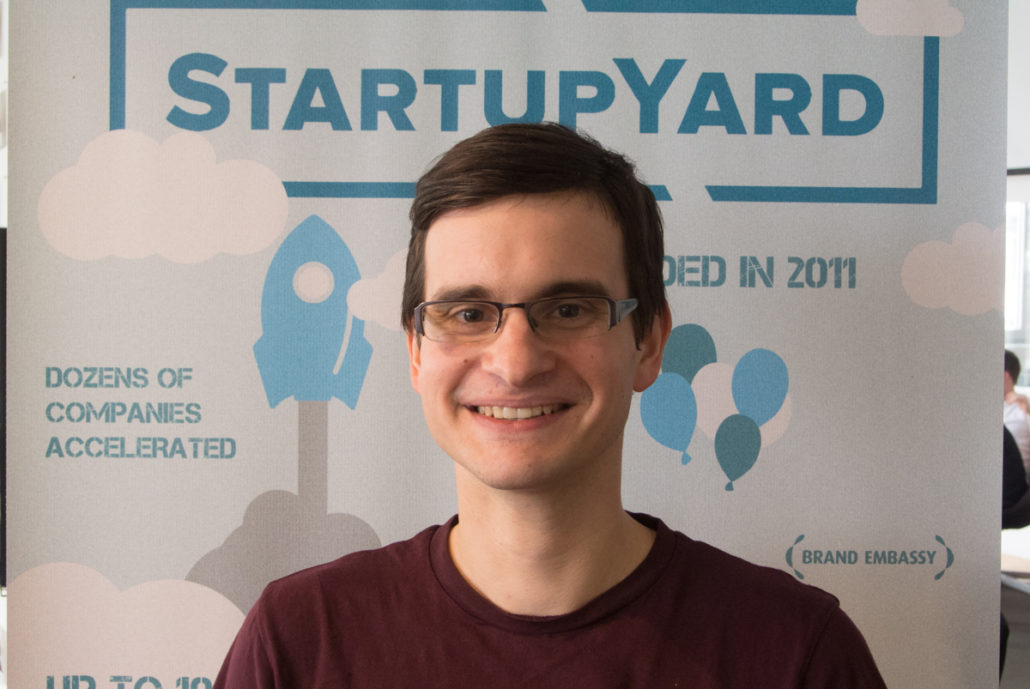
Feedpresso Cofounder Ernest Walzel
Ernest: After the university course was over, we parted ways for awhile. Tadas left for Vilnius, Lithuania to start the company and I was starting a new job at the university. Just before he left, I’d given Tadas a €5 note as my investment into the company, I think he still carries it around in his wallet.
Six months later I decided to quit my job and look for something new. Tadas invited me to Lithuania for 1-2 months in the summer. I thought it might be fun to see what Lithuania’s like and to help out on the project for a little. A year and a half later I’m still there.
The problem you’re attacking with Feedpresso isn’t new. There have been dozens of attempts to create the “perfect feed” for avid readers. What makes Feedpresso unique?
Tadas: Since it is started as “Feedly on steroids,” it remains a very customizable tool. You can add any content source in our system and it will work just fine. We’ve also made sure it works in languages besides just English. This is super useful for readers in Europe, and not a common feature.
Finally, our personalization algorithm doesn’t rely on “popularity” or traction of a story to determine what’s interesting – it’s all done on a per-user basis. All other solutions do some kind of “that’s trending, so it must be interesting” approach. The problem inherent in that approach is that it creates feedback loops. Things that are “popular” become more popular, while things that aren’t popular don’t get any traction because something else is taking up all the attention. It’s like a fire sucking the oxygen out of the room.
I don’t know who just decided that we should pay so much attention to what other people are reading, but that has been increasingly the dynamic with most newsreaders and on social media. The question i have is this: is that actually helping people to read things that matter to them? I’m not sure it is.
Ernest: One problem with most global products is that they aren’t local-friendly. They start with English and they pretty much stick with English. Only roughly half of Europeans speak English. Most of our generation consumes lots of content in English, but we all want to consume local content too. This market is hugely underserved at the moment. Not all news is in English -particularly local and specialized content- and yet virtually all the tools to find content focus on English.
Feedpresso’s offer is to combine all of those big, trusted sources with your local sources like magazines, newspapers, and little blogs. For example, my Feedpresso is a mixture of big UK publishers, Slovak news sites and blogs about cooking and typography. Not a combination you can accomplish with most readers- certainly not in an intuitive way.
What kind of a user experience can people expect from Feedpresso in the near future? What are some of the use cases you’ve been considering?
Tadas: At Feedpresso, our primary goal is to help people to find and stay current on stuff that really matters to them personally. Whatever that happens to be. One thing that we have been seriously lacking in that regard is story and sources discovery. At the moment, we let people pick the sources themselves, and leave the selection of stories for us.
We think this approach is superior for a number of reasons, but still it isn’t the final answer – we want to take an active role in recommending what kind of sources users should follow as well.
Also, we don’t have the iOS version quite yet, and the Web version is coming along as well. Those are things people have been asking us for, so we are working hard to release them pretty soon.
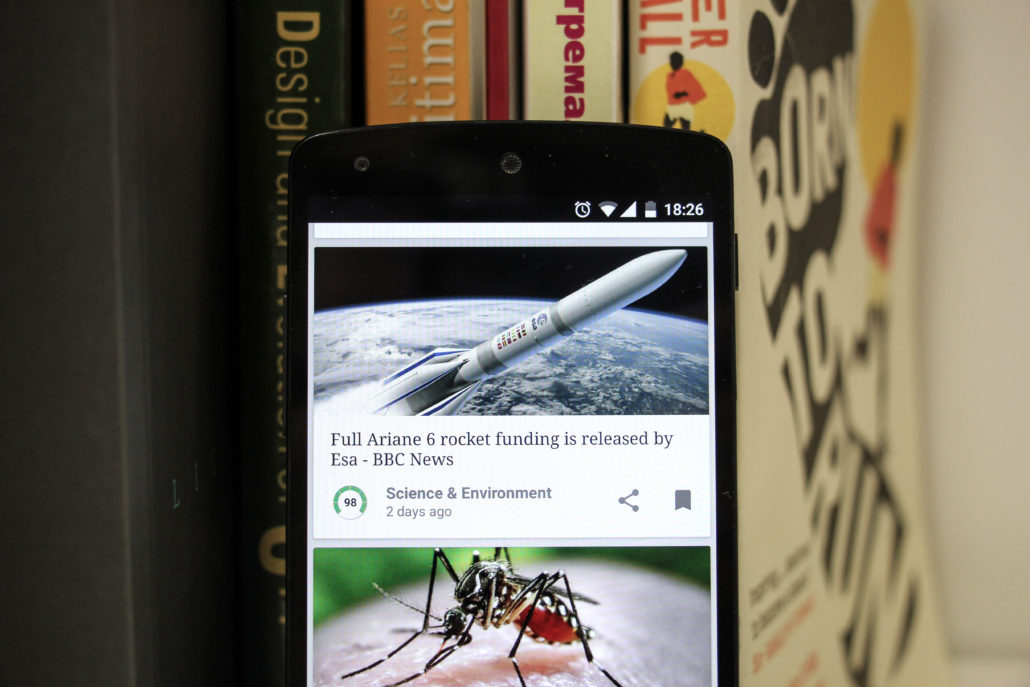
A look at Feedpresso’s design.
Ernest: We want to become the first go-to place for reading in general. There’s great content out there that’s available for free and lots of good writing behind paywalls. One goal of ours is to merge these two worlds, to help you simply focus on quality reading.
I think it’s a bit silly that in 2017, we haven’t found a way for people to get access to a range of premium content at a single price point. Micropayments haven’t worked well, and ad-supported content has a lot of problems, both economically, and trust-wise. Technology like ours may be the key to finally solving that riddle- helping the professional media make a fair wage while helping people get access to what they need most.
Of course it’s not humanly possible to find all the interesting and relevant quality reading on the web. And that’s where our prediction technology comes in. Right now we as consumers rely on very inefficient means of locating trustable and relevant information. Think of Google or Facebook: they don’t go out looking for what you really need, they can only respond to what you do, what you like, and what terms you might search. That simply isn’t enough.
It’s a topic for a later discussion, but we believe this is ultimately because the business model of social media and search are good for some kinds of content, but fundamentally bad for quality journalism in particular. I want Feedpresso to be an answer to that problem.
In the discussion about Feedpresso, the debate has been ongoing about what your strategy will be: Local vs. Global, Freemium Vs. Content Bundling, etc. What have you learned you don’t want to do in the coming year?
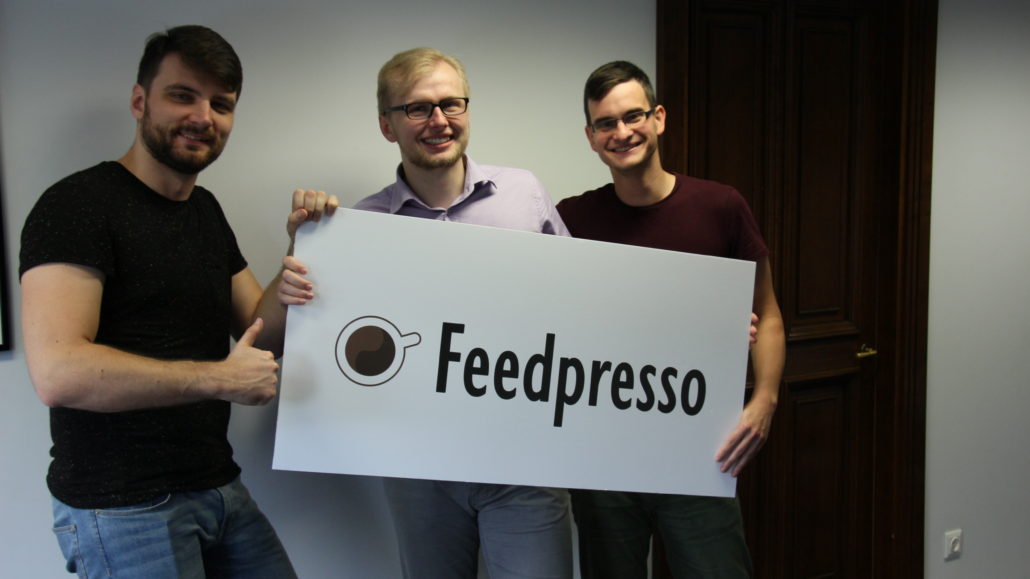
The Feedpresso team
Tadas: We know for sure that we don’t want to be a general reader for everybody. We want to create something that people that care about content that they read would find extremely useful. Again, our aim isn’t to show you what others are talking about, or what’s hot: it’s to show you what matters most to you.
Ernest: Our focus is two-fold. In terms of strategy, we want to serve the European market with non-english news, and in terms of long-term goals, we want to promote “value over clicks.”
Every time you open an article in Feedpresso, we want to make sure that you learn something new. That means that we will not be serving sponsored content, or PR disguised as news. We’ve learned that most people who say they ‘hate news’ actually just care more about the quality of what they read.
The current distrust in media is caused by the current ad-driven approach employed by many media companies. We want to go in a different direction.
“Fake News,” and disinformation are hot topics now. Do you see Feedpresso as a part of the solution to this problem?
Tadas: Definitely! One problem is that people have lost control of their news. We know that Facebook is already where the majority of news content is found by readers. Over 50% of news clicks go through Facebook. But Facebook is only as good as your friend list, or as an algorithm you don’t see, and which may or may not be designed to actually help you become more informed.
“Filter bubbles,” don’t happen because people don’t want to know the truth- they happen because people who are part of a group tend to form standards of thinking and behavior, and to follow those standards unconsciously. Facebook is the perfect place to form a group or a community, but it’s also the perfect place to filter out anything that might not agree with the inherent biases in the group.
Feedpresso is approaching the news not according to what is acceptable or vetted by a group of peers, but instead is private, fully customizable, and impervious to the usual human biases. Machines have their own problems with bias, but they are not emotional, or personally invested in an idea. People in groups can make bad decisions because they want to believe things are a certain way. That’s where machines can help us, just like a compass tells you where North is, no matter what you believe.
Ernest: These problems are symptoms of people reading increasingly more on social media platforms. Fake news sites live on Facebook. They make money when people share them, and so they have to be “shareable.” For some of them, Facebook makes up 80% of their traffic. Fake news articles are designed to be shared and spread within the groups whose opinions they support. And data shows that people share them without even reading them- often based only on a headline.
When you think about it, Facebook is a really bad platform for news consumption. It’s designed around you having a good feeling about yourself, because then you stay on the platform longer and click on more ads. These ‘filter bubbles’ we’re talking about, they’re not a secondary effect of using Facebook, they are its product. Facebook’s advertising engine provides access to the filter bubbles we create for ourselves.
In theory, Facebook and Google should be good for traditional publishers. Why do you think media publishers haven’t been successful in making significant revenue gains online, despite their broader reach? How can an industry outsider change that?
Tadas: The problem is that except for a few really well established brands (like the New York Times), many publishers are earning the majority of their revenues from big advertisers, like retailers and Big Food, or they’re earning it from smaller advertisers who target a particular niche.
Either way, advertising tends not to favor quality. For example, in June 2016, MotherJones reported that one of its investigative stories ended up bringing the company a profit. What is remarkable there is that this was an exceptional case. MotherJones points out that in an advertising-based media market, the incentives are against putting in the time necessary to produce great work. Faster is more profitable.
Following on that, publishers then want to increase their pageviews so they could compensate for that and they do that by posting lots of low quality articles with click-baity headlines. In the end, the value of content decreases, reader quality decreases, reader trust in the media decreases, and the pageviews are worth even less. And the whole cycle starts anew.
At Feedpresso we let users pay for their content so they are the boss in the end. We are not interested in serving them clickbaity articles because that’s not in their interest. Furthermore, we hope that we will encourage people to pay for publisher content with monthly subscriptions that will ensure right incentives for publishers to produce good content.
Where do you hope Feedpresso will be in a year or two?
Tadas: In two years we want to have a solid user base and community that would help us sustain our business. Feedpresso is going to be available on all platforms (Web, Android, iOS, Windows) and it is going to be a one-stop solution for news consumption.
How about 5 years from now? What kind of a company do you want Feedpresso to be?
Tadas: We hope to become a major platform where authors could post their content and would get paid for that. We would become something like Spotify for News. Our long-term wish is to change the economics of news for the better. So far, the ad-age hasn’t been kind to news, and we think it’s time that changed.
We believe that ensuring stable income for authors will allow us to serve a high quality content for our users in the long run. We need self-reinforcing cycles of quality, not a constant downward pressure on the quality of journalism.
What kinds of people are you hoping to meet more in the coming year? What kinds of other companies do you hope to partner with?
Tadas: I would love to meet with the guys from Medium. They are doing lots of relevant work in this field by ensuring that high-quality content reaches high quality readers. Furthermore, I would love to hear what Executives from Reuters, CNN and BBC think about current developments in the publishing field. How are they thinking to fight this ever increasing reliance on Google and Facebook.
It will also be important to establish relationships with charitable organizations that support quality journalism. Many governments also fund independent media, and we need to seek out ways in which we can help those efforts to be more successful.
Ernest: I’m hoping we manage to form partnerships with media houses and content creators. The media industry is going through some challenging times and it is key to success to Feedpresso that publishers are able to ‘afford’ to produce quality in-depth journalism. I’d like to meet Tomáš Bella who started Piano, formerly a nation-wide paywall system in Slovakia. Piano did some real pioneering work in Slovakia: they ‘taught’ Slovak readers to pay for quality content and helped publishers stay more independent. Tomáš Bella knows the ins and outs of paywalled content and keeps experimenting and developing new solutions for subscriber-based publishers.
Can you talk about your experience at StartupYard so far? Which of the mentors have had the most impact on you as individuals, or as a company, and how so?
Tadas: It’s been a great experience. And very tiring! There’s lots of things to do. Now not only do we have to do lots of coding, but we need to study our users much more (that’s something we should have done a long time ago), work on our wording — how we sell ourselves to our potential readers.
We got lots of great feedback from mentors but it’s hard to pick the best. We loved how Constantine Kinsky [the Czech-French Banker and Investor] explained word of mouth marketing, it’s been really useful to sit down with (StartupYard Management team member) Gustavo Vizcardo, and think really deeply about the problem we are solving.
We got lots of great ideas for marketing from [Merrybubbles Founder] Liva Judic and Darko Silajdzic.
Ernest: I like to say that StartupYard is the best thing that could have happened to Feedpresso. I don’t think any other form of investment would’ve given us more value than the input and feedback we’ve been getting here.
bBeing here made us think very hard about the core problem that we’re solving and the values that are important in solving it.
For me personally, interviews with Vojta Roček and Michal Čarný were quite eye-opening and helped me think differently about our target audience: do we provide more value to people who want to read as much as possible or to those that try to read as little as possible?

